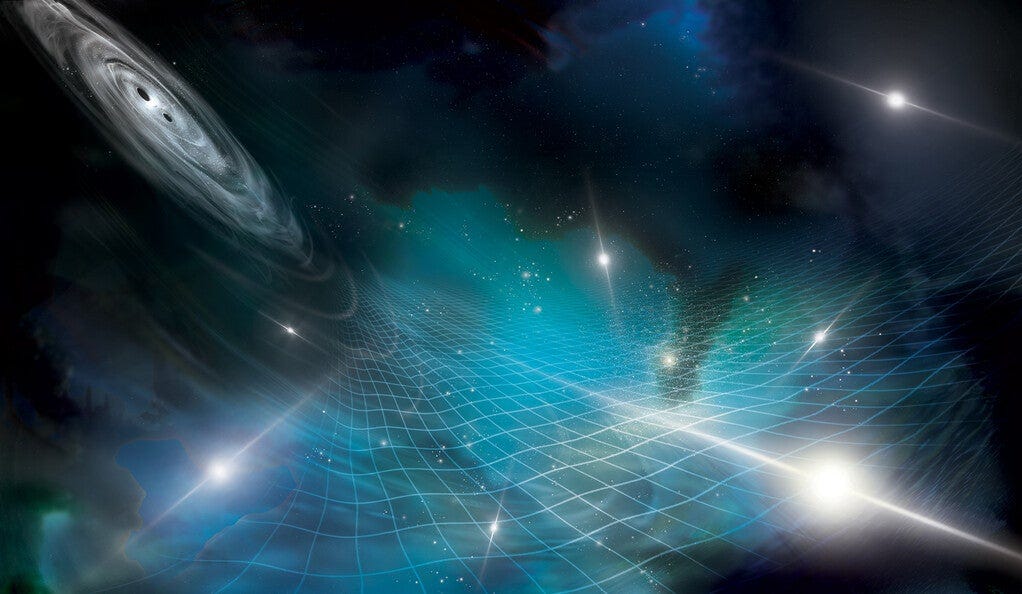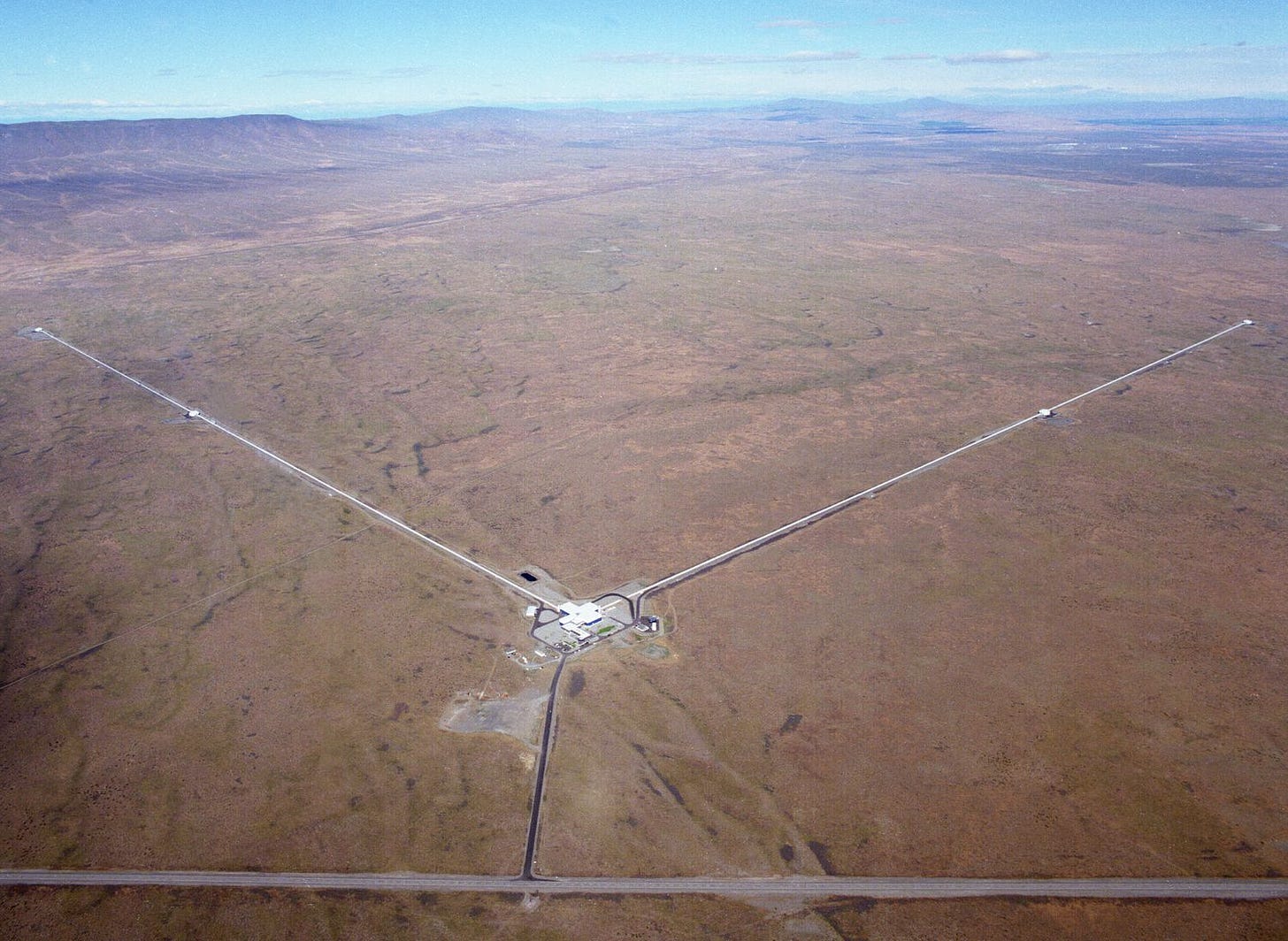If we imagine the universe as a grand symphony, these merging supermassive black holes are the bass players. As they orbit each other, these black holes play the deep bass notes that echo throughout the cosmic concert hall.
Hello, space explorer. There’s an exciting update to report today!
Gravitational Wave Background
The astronomy community is buzzing with news of great, great scale: the motion of everything in the universe. A decades-long search led to the first findings of a low-frequency, background hum likely created by slowly merging pairs of ancient supermassive black holes. The resulting space-time ripples are called low-frequency gravitational waves.
Background
Gravitational waves were first detected in 2015 using ground-based detectors, confirming a prediction made by Albert Einstein in 1916.
The initial detection involved waves originating from the collision and merger of two stellar-mass black holes (the latter meaning a black hole formed by the gravitational collapse of a star).
The latest discovery employs a different technique using something called pulsar timing arrays, which track changes in distances between Earth and pulsars to detect gravitational waves.
Pulsars are incredibly dense remnants of dead stars that emit radio waves at regular intervals, acting as cosmic clocks.
If you’d like to learn more, cosmologist Katie Mack explains in a Twitter thread:
“Pulsars […] have jets of radiation coming from their poles and rotate rapidly. Typically the jet isn’t aligned with the pole, so it sweeps around. When it hits us, we get a pulse.
The pulsars in a pulsar timing array pulse at short (~millisecond) intervals, very regularly. If space is distorted between us and them by gravitational waves, it can delay pulses. By observing a LOT of pulsars, we can (in theory) tell waves are passing.”
The pulsars are spread across the Milky Way. “Our detector isn’t something you can build in a lab or even launch into space,” said Thankful Cromartie, an astronomer at Cornell University, during a public news briefing. “It’s closer to the size of the galaxy.”
Findings
Recent observations indicate the presence of gravitational waves originating from the combined signals of numerous pairs (binaries) of much larger black holes, millions or billions of times the mass of the Sun.

The waves detected through this new technique are significantly stronger and longer than the ones observed in 2015.
Multiple collaborations have reported similar results using data collected over 15 years from 67 pulsars, each monitored for at least three years.
Five independent teams published a series of papers with the evidence on June 29, including:NANOGrav (the North American Nanohertz Observatory for Gravitational Waves);
The European Pulsar Timing Array;
The Parkes Pulsar Timing Array (Australia);
The Chinese Pulsar Timing Array;
Indian Pulsar Timing Array (InPTA).
Importance
The discovery provides strong evidence for the existence of gravitational waves from supermassive black hole binaries, potentially the first direct confirmation of such binaries and their ability to produce measurable gravitational waves.
Note that the background could also correspond to other type of events that happened in the early universe.
Understanding the behavior and characteristics of supermassive black hole binaries contributes to our knowledge of cosmic phenomena and the nature of gravity.
Overall, the recent findings offer an exciting advancement in the field of gravitational wave astronomy, opening up new paths for research on the universe's most massive objects.
To quote Mack again:
“We’re using RADIATION JETS from DEAD STARS to detect RIPPLES IN SPACE from the COLLISIONS OF SUPERMASSIVE BLACK HOLES ACROSS THE ENTIRE COSMOS. Honestly that’s just frickin’ awesome.”
A friend of mine working in this field (warning, bias ahead) commented that he finds this more impactful than the first black hole image; just an interesting perspective to add.
Finally, I recommend giving this video with the beautiful ‘cosmic symphony’ quote a watch.
—MLA




